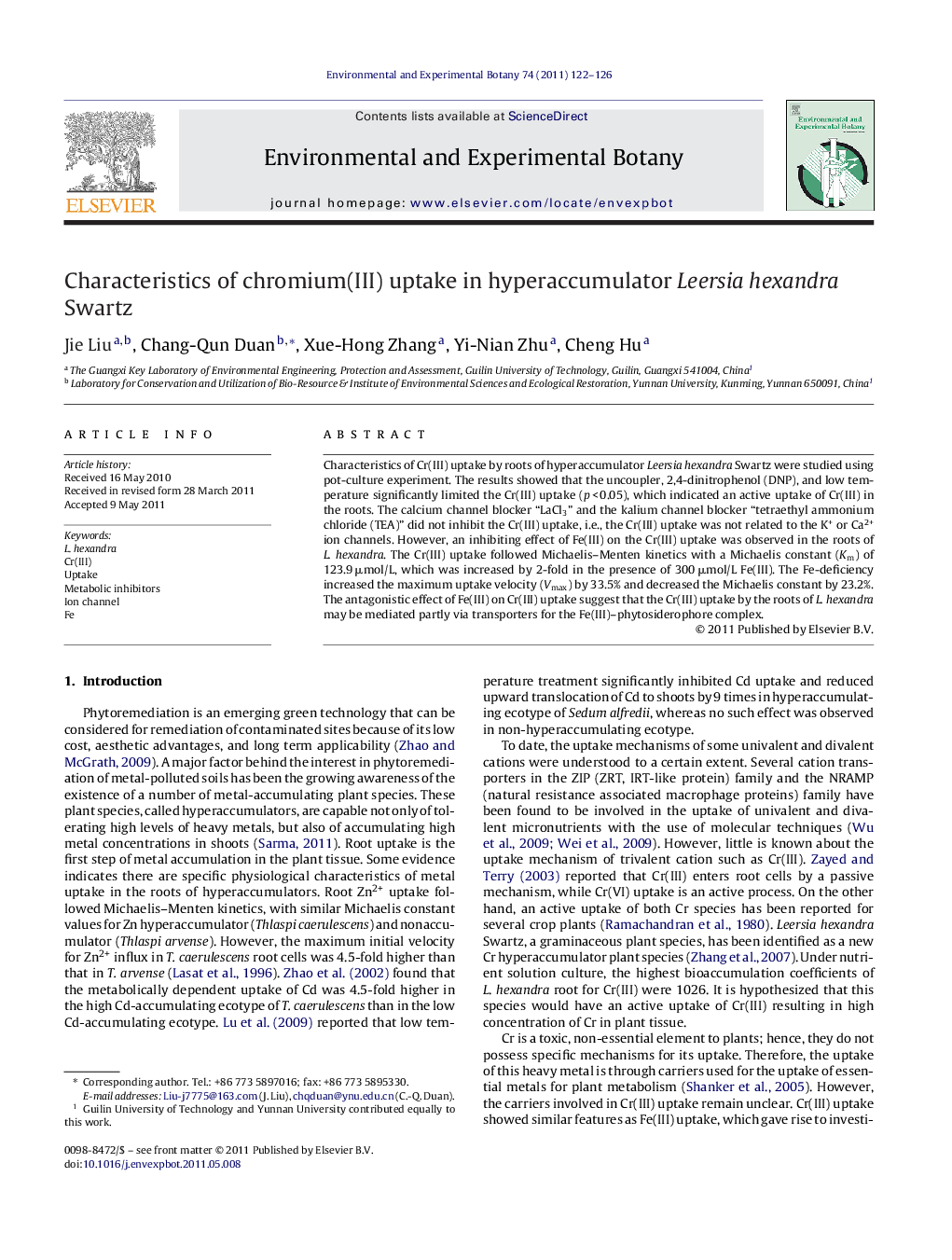| Article ID | Journal | Published Year | Pages | File Type |
|---|---|---|---|---|
| 4554802 | Environmental and Experimental Botany | 2011 | 5 Pages |
Characteristics of Cr(III) uptake by roots of hyperaccumulator Leersia hexandra Swartz were studied using pot-culture experiment. The results showed that the uncoupler, 2,4-dinitrophenol (DNP), and low temperature significantly limited the Cr(III) uptake (p < 0.05), which indicated an active uptake of Cr(III) in the roots. The calcium channel blocker “LaCl3” and the kalium channel blocker “tetraethyl ammonium chloride (TEA)” did not inhibit the Cr(III) uptake, i.e., the Cr(III) uptake was not related to the K+ or Ca2+ ion channels. However, an inhibiting effect of Fe(III) on the Cr(III) uptake was observed in the roots of L. hexandra. The Cr(III) uptake followed Michaelis–Menten kinetics with a Michaelis constant (Km) of 123.9 μmol/L, which was increased by 2-fold in the presence of 300 μmol/L Fe(III). The Fe-deficiency increased the maximum uptake velocity (Vmax) by 33.5% and decreased the Michaelis constant by 23.2%. The antagonistic effect of Fe(III) on Cr(III) uptake suggest that the Cr(III) uptake by the roots of L. hexandra may be mediated partly via transporters for the Fe(III)–phytosiderophore complex.
► Uncoupler and low temperature inhibit Cr(III) uptake by roots of L. hexandra. ► Uptake of Cr(III) by roots of L. hexandra depended on metabolic energy. ► Cr(III) uptake by L. hexandra is not related to K+ or Ca2+ ion channel. ► An antagonistic effect of Fe(III) on Cr(III) uptake is observed in L. hexandra. ► Cr(III) uptake by L. hexandra may be related to uptake system of Fe(III).
